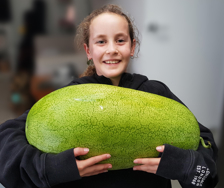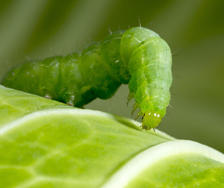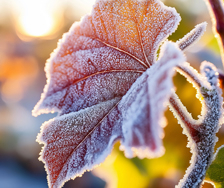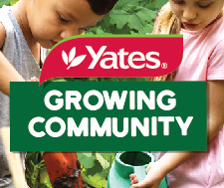Yates Account
Join now
Create a Yates account today!
Sign up to join the Yates Garden Club for monthly e-mails packed with seasonal inspiration, tips for success & exclusive promotions.
Plus if you’re a Garden Club member you can take part in the Yates Growing Community - a blog to share successes, get advice & win prizes in fun challenges along the way!

Forgot password
Enter the email address associated with your account, and we'll email you a new password.

All About Kamokamo
Kamokamo has been developed into unique regional fruit shapes, ranging from round and squat with protruding ribs, to elongated ovals with shallower ribs (our Yates Kamokamo variety is an oval type). Kamokamo fruits are speckled green, gradually turning yellowy orange as they mature. Leaves are large and covered with rough-textured bristly hairs.
When harvested young and tender, kamokamo can be used just like zucchini in a meal. It’s a tasty proposition when pan-fried, mashed with butter, boiled or grated into fritters.
Fruit can also be left on the vine to ripen and go yellow, although it does develop quite tough skin. These larger, older fruits are best cooked like a pumpkin; they’re quite delicious roasted.

How to Grow Kamokamo in a Garden
- For early sowing, sow into pots of Yates Black Magic Seed Raising Mix in a well-lit, protected spot. Transplant after 3-4 weeks, to a sunny, well-drained position.
- For direct sowing, select a sunny, well-drained position. Dig compost and Yates Thrive Natural Blood & Bone into the soil before sowing. Form small mounds of soil spaced 1.5m apart. Press 2-3 seeds into the top of the mound, spaced at 1.5m, into moist soil.
- After germination, thin out the seedlings, keeping only the strongest plant.
- Protect kamokamo seedlings from snails and slugs.
- Feed weekly with Yates Thrive Natural Fish Seaweed+ Plant Food.
- Keep kamokamo plants well-watered, particularly in hot or windy weather. Mulch with organic mulch, like pea or lucerne straw, to help retain soil moisture.
- Heat and/or water stress can lead to poor fruit set, particularly when plants are young.
- Water only the soil at the base of the plant, to reduce the risk of disease. Constantly wet foliage can promote fungal issues, like powdery mildew.
Kamokamo Growing Tips
- Kamokamo needs plenty of space for the vines to trail or climb over fences or shrubs. The vines are extremely vigorous and will sprawl for quite a distance.
- Like most fruiting plants, kamokamo requires pollination to help fruit set. Bees assist with pollination, so it makes sense to encourage them into your garden by sowing a variety of flowering plants, or wildflowers.
- Hand pollination can also be used to improve fruit set. To hand pollinate, pick the male flowers (the male flowers form on a slender, erect stem), pull off the petals and gently brush them over the centre of the female flowers (the flowers that form above a tiny swollen base). Do this early in the morning, while the flowers are fresh.
- Most gardeners pick kamokamo while it’s small, for sweeter flavour and a bigger yield. Harvesting regularly keeps more flowers and fruit coming.
- Wait for two years before you plant kamokamo in the same position. This helps decrease the risk of soil-borne diseases.


















Share
Share this article on social media